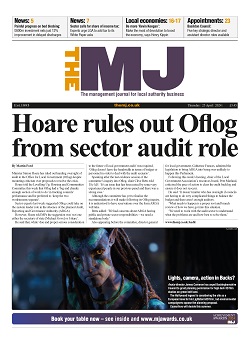As councils begin turning their attention towards the Autumn Statement and next year’s budgets, it’s clear with shrinking grants the challenge facing the sector has never been greater – with more focus than ever on becoming self-sustaining and self financing.
A common theme with a number of chief executives is the view that to take their transformation to the next level they will need to undo some of the recent work that has made savings in the past. The change now needs to be truly radical and is likely to take the authority’s thinking about what it is for and what it will do in a very different direction. But, now more than ever, we don’t have the financial headroom to fail.
Feedback from councils around the UK has shown some common elements of thinking about the coming year.
Generating new income – particularly from property and assets – is becoming a key part of many authorities’ plans.There will also be a focus on developing real commercial skills not just applied to new commercial ventures, but also to maximising the value to the community of all services. And this approach leads to reducing the cost of and demand for public services.
Underpinning this, authorities will need a close focus on design principles as they transform – helping identify not only what the transformed authority will look like but also how effective their implementation has been.
The feedback from councils on the 2015 iESE white paper, From Surviving to Thriving, identified the key design principles, as well as providing a basis for a clear baseline. A baseline that not only shows where gaps may be, but also where existing, long-standing strategies may need re-thinking.
Taking stock of the plans to date before embarking on the next phase is something we are seeing more of than we ever have previously.
The sector has a great track record of holding the mirror up, planning and delivering change. Recently we have seen a well considered business case announced for the merger of Taunton Deane and West Somerset councils that began with a stocktake of their existing plans.
We were lucky enough to work with them in helping to create a clear blueprint for a sustainable future.
Similarly in Ryedale this evaluation of their transformation activities and plans allowed them to draw together a more coherent and radical change programme, which will deliver both a customercentric organisation and very significant budget savings.
And I’m sure that these won’t be the last, as local government shows again that not only is it the most efficient part of the public sector, it creates this efficiency by putting the local resident at the centre of its thinking.
Dr Andrew Larner is chief executive of the Improvement & Efficiency Social Enterprise (iESE)
Web: iese.org.uk Twitter: @ieseltd
This column is brought to you by iESE The public sector transformation partnter
Want full article access?
Receive The MJ magazine each week and gain access to all the content on this website
with a subscription.
Full website content includes additional, exclusive commentary and analysis on the
issues affecting local government.
Already a subscriber? Login



